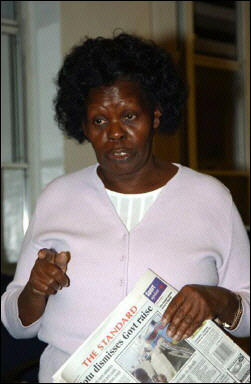The MP for Pokot, Francis Kiyonga, last week accused the Special Forces Group (which I command) of murdering innocent people in Kosiroi (in Moroto District) and Loro (in Amudat District).
The Sunday Monitor of August 22 even suggested that I had personally led a raid that had allegedly killed 12 innocent Pokot on their way home from a ‘limestone mine’. I wish to categorically state that both allegations are complete fabrications and lies!
First of all, Special Forces Group (SFG) does not conduct operations in Loro. That is not within our ‘area of operations’ (AOR). So there is no way we could have ‘killed innocent people’ in an area where we have no forces. Secondly, SFG does not ‘kill innocent people’. That would be a total negation of the UPDF’s whole approach to warfare. From the inception of this army; in the grasslands of Ngoma, Singo and Bulemeezi, it has been a people’s army. Our ancestor (the NRA) fought one of the very few successful ‘people’s wars’ in contemporary history.
The UPDF is a people’s army! SFG is part of the UPDF, so how on earth do we start murdering innocent people? Our history and beliefs aside, there is also the small issue of the UPDF’s code of conduct (part of the UPDF act of 2005), which stipulates very harsh punishments for offences of the nature that we are being accused of.
The President and Commander-in-Chief, has said on numerous occasions that the UPDF has executed many of its soldiers for capital offences in the past. The UPDF, therefore, does not tolerate ‘murdering innocent people’.
There are very few armies in the world that can measure up. The integrity and honor of the UPDF is beyond reproach.
Incidentally, SFG deployed to Karamoja in response to the directives of the Commander-in-Chief and we shall stay there, supporting the army’s disarmament campaign, until the Commander-in-Chief decides otherwise.
In Karamoja, all the ‘contacts’ (i.e. the fighting) that SFG units have been involved in have been initiated by the rustlers. This means that our soldiers have to be fired upon before responding to any attack. This measure is part of our standard operating procedures (SOPs).
Of course, this means that quite often we lose soldiers in the first few seconds of an engagement (as has happened already in Karamoja), but this is a risk we take in order to ensure that we are actually in contact with the enemy. Whoever shoots at us can be sure of two things. We will respond and we will win the firefight! This is a lesson the LRA learnt in Soroti (in 2003) and the ADF in Bundibugyo (in 2007). So, any would-be attackers best be advised not to try, because it will only end one way.
Therefore, in Karamoja thus far we have not encountered any ‘innocent civilians’ but armed and determined rustlers. Again, the accusation of ‘killing innocent people’ is absurd. Contrary to the viewpoint being pushed by Kiyonga, relations with the Pokot and Tepeth around Mount Moroto have been good. They regularly give our units information on raids that are in the offing, or that have just occurred.
The Minister of State for Karamoja Affairs has already dealt with the political dimensions of Kiyonga’s falsehoods.
I shall not belabour the point, except to say that the people of Karamoja are a lot more sophisticated than Kiyonga seems to think they are. They will easily see through any schemes at tarnishing the President’s good name in Karamoja, by way of deception.
Throwing about my name and trying to give it bad publicity in the hope that because I am a blood relative of Museveni, somehow his reputation will suffer is a dead end. The 3rd Division commander, Brigadier Patrick Kankiriho, has also ably shown that the people who Kiyonga claims were killed by SFG, were rustlers, killed (in disarmament operations) long before SFG got to Karamoja.
One of those who Kiyonga claimed SFG killed (one Lokodet) is apparently alive and well. He is even an LC I chairman, according to Afande Kankiriho.
Finally, abandoning the culture of raiding for cattle and gun violence is a critical necessity, if Karamoja is going to participate in the socio-economic development of the rest of the country. The Karimojong are a great and warlike people, worthy of admiration. There is a lot they can contribute to this country. The UPDF’s disarmament campaign in Karamoja (already a showpiece for the rest of the East African region, where other armed nomadic tribes roam and terrorise each other) should be applauded and supported.
Without disarmament, we would have 40,000 guns in Karamoja, killing and maiming the Karimojong as well as neighbouring communities. Is that the kind of Uganda we want for ourselves and our children? I think not.
Lt. Col. Muhoozi Kainerugaba is Commander, Special Forces Group, and son to the president and the Minister of State for Karamoja.



Comments